
Fast, affordable Internet access for all.

Fiber to the Home
Officials in Washoe County, Nevada have struck a new public private partnership (PPP) with Digital Technology Solutions (DTS) to deploy affordable fiber service into the long-neglected rural towns of Gerlach and Empire, Nevada. The deal is part of a broader effort to bring affordable access to underserved residents just out of reach of broadband access.
Behzad Zamanian, Washoe County Chief Information Officer, tells ILSR that the county’s two-phased project first involved contracting with DTS to construct and maintain a $2.3 million middle-mile fiber network that connected Gerlach to Reno, culminating in a ribbon-cutting ceremony at the Gerlach Community Library last July.
“The reason [Gerlach] was identified as a high priority was that it was considered unserved or underserved; there was no presence of any of the major Internet service providers in that region,” he noted. “There was no high speed Internet available.”
Until last summer, area students and residents were completely cut off from online learning, employment services, remote health care, and other essential services and opportunities.
Expanding the middle mile network required close collaboration with the Pyramid Lake Paiute Tribe, which allowed the county to piggyback on the tribe’s existing fiber runs from Reno to Nixon, Nevada. The county then worked closely with the Nevada Office of Science, Innovation, and Technology (OSIT) and DTS to deploy fiber the remaining 60 miles from Nixon to Gerlach.
One year after launching a municipal fiber network, Dryden, NY officials say they’re making steady progress in their quest to expand affordable fiber broadband to the entire town of 14,500.
While the effort hasn’t been without obstacles, town leaders say the public response to their foray into broadband has been overwhelmingly positive.
“While there are challenges, we are continuing to make great progress in the buildout,” Dryden Town Supervisor Jason Leifer tells ILSR. “We have support from our residents, who continue to show interest in this project. We also have financial support from Tompkins County in the form of grants–and from neighboring municipalities who are interested in replicating our model.”
The city’s network began with a 50-home trial pilot trial in the southwest part of town. The broader $15 million network will be funded by a combination of bonds, $2 million in federal COVID-19 disaster relief funding, an Appalachian Regional Commission grant, and eventually, subscriber revenues.
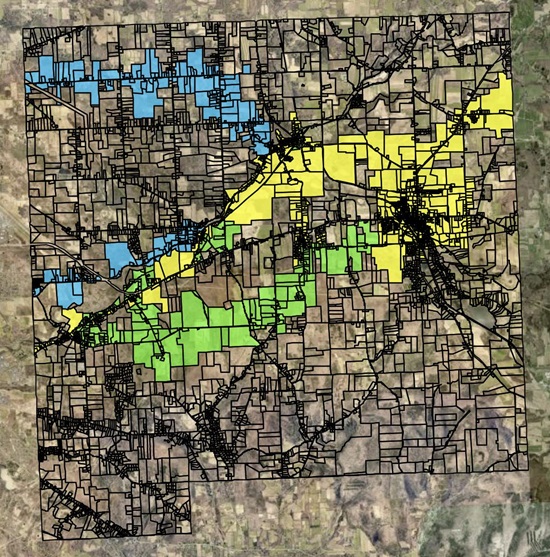
The town took a phased approach to deployment, first by connecting the backbone of the network in the southeast of the city, followed by a focus on the western and eastern halves of the municipality, respectively. The Dryden fiber website features a build map that helps locals track network progress.
“We have currently passed over 420 addresses with our buildout,” freshly-appointed Dryden Fiber Executive Director David Makar tells ISLR. “This includes over 150 rental properties – mostly single family homes and apartments – as well as many owner occupied homes and businesses. We are still in phase one, and as we move into the village of Dryden and the hamlets of Varna, Ellis Hollow, and Etna, we will be in phase two.”
The Tribal Broadband Bootcamps (TBB) – a three-day intensive learning experience focused on building and running Tribal Internet networks – are becoming even more immersive as the 11th TBB is now underway at the homestead of TBB co-founder Matthew Rantanen.
As more Tribal nations build out their own broadband networks to deliver service to Indigenous communities in the most disconnected areas of North America, broadband-minded Tribal leaders and instructors continue to gather in different Tribal regions across the country several times a year for the ultimate Indian Country networking experience.
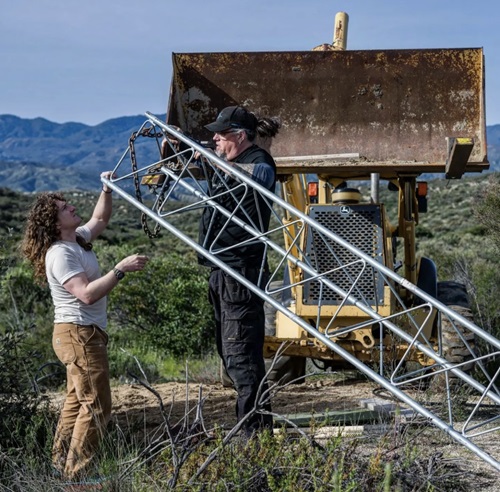
This time participants descended on “RantanenTown Ranch” in Aguanga, California – part of southern California’s Inland Empire region near Temecula.
With help from ILSR’s Community Broadband Networks Initiative Director and TBB co-founder Christopher Mitchell, and a handful of other instructors, the ranch has been transformed into a working demonstration site so participants could better learn the technologies involved in constructing broadband networks, while taking a deep-dive into what it takes to operate a network.
All of the previous bootcamps offered hands-on training. But, this particular bootcamp took it up a notch as TBB instructors set up a full deployment demonstration, illustrating how fiber is buried and/or deployed aerially.
Digging In
After years of planning, Edison, New Jersey officials are moving forward on a municipal fiber plan built on the back of a $2 million American Rescue Plan Act (ARPA) grant. While the funding was originally announced last summer by state leaders, city officials only just passed a resolution last week accepting the grant.
Edison residents have long complained of a local broadband monopoly at the hands of Optimum, resulting in spotty access, slow speeds, and high prices. While Edison wants to break the competitive logjam, the full cost and scope of Edison’s as-yet-unfinished plan remains unclear.
Edison spent $36,750 on a feasibility study in 2022 to determine the plausibility of building a citywide fiber network. The resulting study by Matrix Design Group found that 87 percent of Edison locals would likely switch to a city-owned and operated fiber network if the option existed.
"Ending Optimum’s monopoly in Edison is a high priority," Edison Mayor Sam Joshi wrote on Instagram and Facebook shortly after the study was published, calling it "a step towards internet freedom."
Peppered by winding country roads and remote islands, Maine exemplifies the challenges in even deployment of affordable broadband. But thanks to tenacious island communities and forward-thinking state leadership, a growing roster of community-owned broadband networks are leading the charge toward affordable access in the Pine Tree State.
Peggy Schaffer, former executive director of the state of Maine's broadband mapping and expansion effort, ConnectMaine, has played a starring role in shoring up Maine’s broadband mapping data after years of federal dysfunction.
Schaffer’s well versed in the broad array of challenges faced by remote Maine communities, and says she’s long been impressed by the “scrappy” nature of Maine’s community-owned island deployments, which have faced down and overcome no limit of onerous challenges in an ongoing quest to finally bridge the state’s long standing digital divide.
Maine is currently ranked 49th in the U.S. in terms of resident access to gigabit-capable broadband service. Like so much of the country, the state is heavily dominated by regional monopolies that failed to uniformly deliver affordable, next-generation broadband, despite decades of federal subsidies, regulatory favors, and tax breaks.
Now local Maine communities are taking matters into their own hands, beginning with long-neglected island residents no stranger to unique logistical challenges.
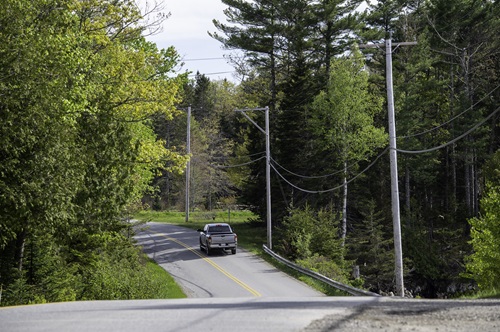
‘It’s A Story Of Perseverance’
Martinsville, Virginia has technically owned a municipal fiber network for the better part of a generation. But the city never had the time, resources, or interest in maximizing the Municipal Internet Network’s (MINet) full potential until COVID demonstrated the importance of affordable access and federal broadband grants made expansion a viable reality.
At a Martinsville city council meeting on February 13, the council offered unanimous support for a phased expansion of the city’s fiber network.
What exactly the expansion will look like, and how it will be funded, very much remain a work in progress.
The core MINet fiber network originally consisted of 48 strands and 20 miles of fiber connecting city schools, municipal buildings, local businesses, and key anchor institutions. A 2009 estimate indicates the network has saved the city between $100,000 and $150,000 annually on telecom lease agreements every year since its inception.
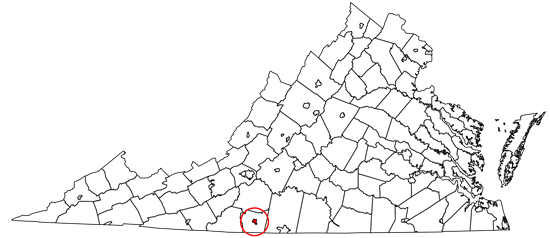
Despite having been first constructed in the 1990s, Martinsville’s MINet only has about 376 customers (98 of them being residential) in a city of nearly 14,000 residents. There’s roughly 20 users currently on a multi-month waiting list, eager to get access to affordable fiber at speeds up to a gigabit per second (Gbps).
Mike Scaffidi has been the MINet director for 26 years. He tells ILSR that while the city has contemplated network expansion for a long time, the city never had the staff or resources to prioritize the expansion or marketing of the city-owned fiber network.
Ottawa County, Michigan officials say they’ve struck a new public private partnership (PPP) with 123Net on a $25 million fiber deployment that aims to bring more uniform – and affordable – broadband access to Michigan’s seventh largest county by population.
The Ottawa County Board of Commissioners voted last month to approve a master agreement and letter of intent with 123Net.
The finalized agreement calls for 123Net to spend two years deploying 400 miles of new fiber infrastructure as part of an open access, carrier neutral fiber network to bring new competition – and affordable fiber – to 10,000 county residents and businesses.
The $25 million network will be funded by $14 million from Michigan’s Realizing Opportunity with Broadband Infrastructure Networks (ROBIN) grant program; $7.5 million from Ottawa County’s American Rescue Plan Act funds, and $3.5 million in private funding from 123NET.
“We’re at an interesting time in broadband deployment as there are a number of unique funding programs that counties and municipalities can access,” said Chuck Irvin, Executive Vice President of 123NET, said in a statement. “123NET is proud to be part of this exciting project.”
At the same time, county officials say they’ve struck a separate deal with Tilson Technology to build new wireless towers to deliver fixed wireless service to an undetermined number of rural county residents for whom deploying fiber is cost prohibitive.
Golden, Colorado has struck a new right-of-way agreement with Google Fiber that should expedite the competitive delivery of affordable fiber to the city of 20,000.
The deal gives Google Fiber non-exclusive access to public right-of-way to build a commercial broadband network, though it delivers no guarantee of uniform access across the entire city.
In a memo to the Golden City Council, Chief Innovation and Technology Officer Jiles McCoy said the city’s new agreement “would act as a template for any future companies wishing to build broadband services in the Golden right of way.”
The move comes after years of discussion in the city as to how to improve local broadband competition, reduce prices, and expand affordable access.
In 2016, Golden residents voted to opt out of a now defunct state law, ghost written by regional broadband monopolies, restricting the construction and operation of community owned and operated broadband networks. Last year Colorado leaders finally eliminated the law completely, opening the door to greater expansion of community-owned networks.
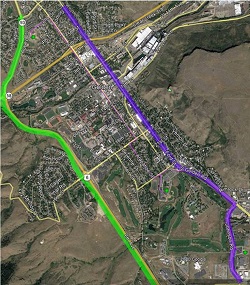
In 2019 the city completed a feasibility study showing that the construction of a full city-owned fiber network would cost $37 million. Instead of tackling the entire project at once, advisers recommended the city proceed in phases, beginning with the construction of a $3.8 million, 10.5 mile fiber ring connecting key community anchor institutions.
Eagle, Idaho is preparing to connect the first of the city’s 32,000 residents to a new, municipally-owned open access fiber network. The project, which the city says will take between five to 10 years to complete, is being heavily funded by federal grants, and aims to meaningfully boost broadband competition – and affordable access – citywide.
ISLR profiled Eagle’s efforts last year, noting that the $5 million initial downtown fiber loop was jump-started with the help of the city’s $6.7 million allotment of American Rescue Plan Act (ARPA) funding.
Roughly 300 homes and 30 businesses should be able to connect to the network within the next six months, the city now says. More than 30 residential subdivisions are in the early deployment phase, and the project will expand steadily over the next decade, funded by revenues from existing subscribers and future state and federal grant opportunities.
Like countless American communities, Eagle suffers from a notable lack of competition between regional phone giant Lumen (formerly Centurylink, now operating under the Quantum brand), and regional cable company CableOne (under the Sparklight brand). That muted competition results in high prices, spotty access, slow speeds, and substandard customer service.
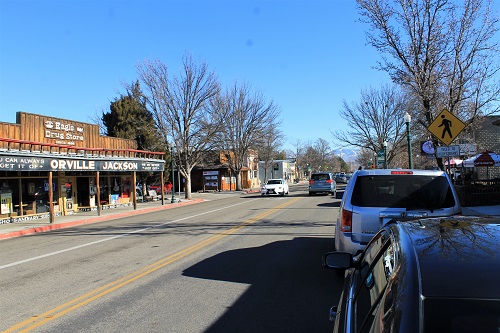
Enter Eagle’s open access fiber network, which will allow numerous ISPs to compete in layers, driving down market entry costs for providers and broadband access prices for consumers. City leaders say the aim is to offer symmetrical gig speed service for between $50 and $60 to residents, and $150 per month to local businesses.
Colorado has long been home to some of the most innovative municipal broadband projects in the country. That trend has only accelerated with last year’s voter-approved elimination of municipal broadband restrictions, and it’s now being buoyed by a massive new wave of state grants that should further expand affordable broadband to long-neglected parts of the state.
Colorado Gov. Jared Polis recently announced the first of multiple broadband investments using stimulus funding from the U.S. Treasury’s Capital Projects Fund (CPF) program. The CPF is funded by $10 billion made possible by the American Rescue Plan Act (ARPA), and is a key part of the state’s goal to bring affordable broadband to 99 percent of Colorado residents by 2027.
According to the Governor’s office, the state just authorized $113 million in CPF funds on 13 projects that will bring fiber service to nearly 19,000 homes and businesses across Colorado. State officials say the funding will be heavily focused on projects in the South and Southwest portion of the Centennial State, where connectivity needs are greatest.
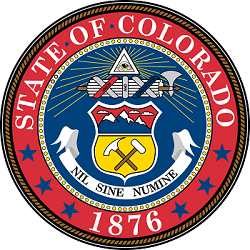
The Colorado Broadband Office says it received 112 applications asking for more than $642 million in broadband funding across the state–five times greater than the allotted awards.